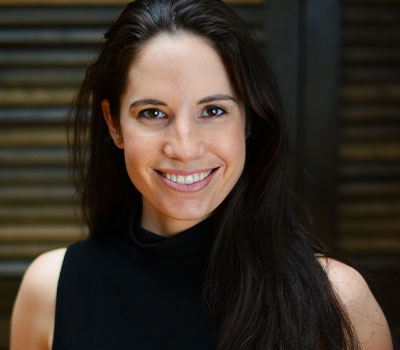Kylie Monagan started with Civetta Hospitality Group as an intern. Today, she is a partner in the group, which operates four restaurants and two events venues in New York City and the Hamptons. At Calissa, a restaurant in the Hamptons, Monagan explained that the diners have gotten significantly more adventurous with their wine choices, ranging from Greek orange wine to hybrids from Vermont, and serious about high-end tequila as well. —Susannah Smith


I know that you are involved with Calissa, Amali and Bar Marseille, etc. I would love to hear your thoughts about the group in general but also Calissa specifically.
In terms of the story of how the wine lists have developed, I think Calissa’s is the most interesting. Amali’s has been really large and it’s featured natural winemakers, and Greek wine for over a decade. But Calissa is in the Hamptons; we opened it back in 2017, and the wine list was built of three different types of wines—we called it Greeks, Geeks, and Grandmas. This is six years ago, so I don’t think there was any orange wine on the list, but certainly naturally made, some fringy wines from different parts of the Mediterranean and then Grandmas, like Kistler and certain domestic and French wines. And to our sort of disappointment and dismay, the Grandma category was just what was selling. So, the Geek category shrank. And I kept a few things on—there’s certain producers like Hatzidakis that are really important to us having a bunch of cuvées, Château Simone, verticals of really cool direct-import Greek wines, but we kind of like pulled back. I’m like, “Okay, I’m the one drinking all like the Txakolina.” So I’m just not going to put it back on.
And then, I don’t know what it was…maybe because our audience, our guests, were suddenly younger in the past two years: Last summer, I had a couple of orange wines on the list, Greek wines, maybe like two or three. And we sold out of them in a weekend. I was like, Wow, that’s crazy, so I brought them back. And we sold out of all of them again, I’m like, Okay, I need to pay attention to this. So we brought on a whole orange section, we had an orange wine by the glass. And as I was going to some tables, I was getting a lot of questions about that section, which was great. It’s so always fun to sell wines that you like yourself.
And then, I was with one of our partners, Nicola Kotsoni, who grew up in Greece, on the island of Zakynthos, and she’s super well traveled, has amazing taste. But we were tasting these orange wines, and I was thinking she’s probably not going to like these, they’re kind of weird. And she was like, “This is how my grandmother used to make wine. This is what wine used to taste like in Greece, how everybody would make it in your village, and this is what it was.” So, I thought that was really cool. Not just trendy and new—it’s actually a really old way of making wine and a Greek, a Mediterranean way of doing so. I think that was the most interesting thing that happened to Calissa’s list. And the Greek section continues to grow.
I love how they are orange wine sort of ended up being the Greek wine, the geek wine, and the grandma wine, all in one bottle.
When I was looking at your list, I was seeing the little cues like Drink if you Like Nebbiolo, if you’d like cabernet, etc., and it struck me that it’s a fine line you have to walk with a Greek-heavy list in the US. When people maybe don’t know all the Greek regions, does it help the guest to do the typical strictly regional presentation? I thought the way you did it partly by region, but mostly by what people are going to be needing to pair with their meal, is probably very helpful with some more esoteric selections.
Exactly. Because our goal is to push people to try the wine from Macedonia, instead of picking a pinot noir from California as usual. We have many sommeliers on the floor, we do training with our staff, we do tastings, but it’s just so, so many wines, and they just can get quite esoteric. So, especially for the Saturday nights, when we do 600 covers, and many people are asking for a somm and drinking wine, I think it kind of helps them feel more confident and asking questions or making a selection. Because the wines are so good, they’re such great value and we just we want people to drink them and enjoy them. So yeah, I switched over two summers ago to this way, and it just made it so much easier for people to feel confident and competent at selecting wine and feeling good about it.
The wines that you cited as good movers made for an interesting list: there was a roditis with skin contact in amphora, a Tuscan vermentino, and then a blend of hybrid grapes from Vermont, from La Garagista. It sounds like your customers are getting really adventurous.
Yeah, the Fonte delle Donne Vermentino was a glass pour. I think everyone’s always going to drink Sancerre, like that’s a given, but it is just getting so expensive, so I think that people are happy to try a different appellation if they’re getting the same kind of white wine experience that they’re looking for. So that vermentino was our go-to suggestion for a crowd-pleaser white with good acidity, good minerality.
The La Garagista I would say was an excellent seller within its category. I love Deirdre [Heekin], I love her wines, and I was pleasantly surprised. It was exciting to see all these people asking about it, proactively calling it out, curious about it. And that’s another one that, it’d be at the end of the week and I’m like, Wow, we sold a case of that. That’s crazy. There’s so much on the market right now that’s trying to play into that vibe of natural and eccentric, but you can tell the real deal. Everything she does is so loving—the labels, the names, of course the wine itself. You taste it: it’s so layered. And then there’s all this like trendy stuff. I think that people can sniff out kind of the difference between the two.
You listed that 42% of your alcoholic beverage sales were wine, which seems pretty low for a restaurant with a wine list the size of yours. Are people just ordering a ton of cocktails now?
Yeah, so I actually ran those numbers month by month because I was curious. We’ve added some music programming, and we are a destination not just for dinner, but also for late night. Our audience is getting younger and more people are drinking cocktails. For sure, it’s noticeable.
What things in particular are people going for in cocktails, or just spirits straight?
Tequila and mezcal are the biggest: they outsell vodka. For me, that’s exciting because there are really cool producers in those two categories as well. We have an extensive list of higher-end, really cool tequilas. The amount of Clase Azul Reposado that we buy is crazy. People do bottle service at the restaurant, at their table even. People will often finish dinner and then buy a bottle to just drink at the table and hang out. So that tends to be tequila, vodka, mezcal. We have also seen Champagne sales grow in the last few years along with cocktails. So, maybe the more celebratory kind of nightlife-y feeling all around.
We sort of modeled Calissa after the restaurants that one would go to in Greece, in Mykonos, name the Mediterranean islandy destination, summer destination. If you’re an 85-year-old couple, and you want to have a good meal at 6:30 on a Saturday in August, we want that to happen and you to feel good about that. But then if you’re a group of ten twenty-somethings, and you’re coming for dinner, but then also to hang out after and have a good time, we want to offer that as well. So we do see a lot of that and we try also every summer to add something new to the restaurant, whether it’s a different dining experience or like what we call the theater of dining: DJs, different types of performers. We’ve had belly dancers before, and pop ups, shopping experiences, just to keep people interested. They’ve taken an Uber, they’ve dressed up, they’ve come to the restaurant, we want to offer them as many different experiences as we can for their evening with us.
Just as a point of curiosity, how seasonal Are you? Do you run at the same number of seats and services in the winter as the summer?
No, complete night-and-day. We could do 20 covers this time of the year [late February], and we do 600-plus in the summer. It’s a completely different restaurant.
That’s insane. How do you manage that with staff? Do you just have a ton of seasonal workers?
We have core staff members who live on the property, or they live in the Hamptons, year-round: two chefs, managers, cooks, and it’s almost like everyone feels like a manager in a really good way. We have a guy Israel that’s been with us for years as a server and he’s the best. He started as back-waiter and he’s a manager. He knows the property so well; there’s a couple of guys that fit into that category. In the summer, we have these ambassadors of Calissa that can then help everybody else get acclimated. And the rest of the staff for the most part, I mean, we do hire seasonal staff, people that just want to work for four months in the summer, but we’re able to bring out also a lot of our staff from the city at Amali and from Juniper, which are the slowest in the summer. So it works out well. Those two are kind of opposite seasons.
And do you house them there? Do you have apartments above the restaurant?
Yes, quite a few. It’s been so busy the last few years that we have also been getting additional housing for everybody. We have to offer housing. It can be like a little bit [MTV’s] “Real World” at times. It can be so overwhelming, in so many ways—the number of people, the sort of intensity of the people that come to you with at the restaurant. And then there’s that interpersonal aspect between staff because everyone’s living together, and they’re working together a lot, and it’s very intense. It was tough the first couple of years, but I think now that we’ve reached an understanding and a rhythm with it. And when we have family meal, for example, it really feels like family meal. People are hugging each other. Some people come for just Friday, Saturday, so they come off the Jitney or off the train or whatever, and they’re like hugging everyone, and it feels like a nice homecoming party. And then the level of teamwork at that restaurant is so high: everybody’s really got each other’s backs and really watching out for each other.
Susannah is the Editorial Coordinator for Wine & Spirits magazine in addition to covering the wines of Greece and Cyprus.
This is a W&S web exclusive. Get access to all of our feature stories by signing up today.


















